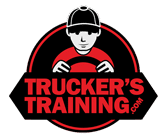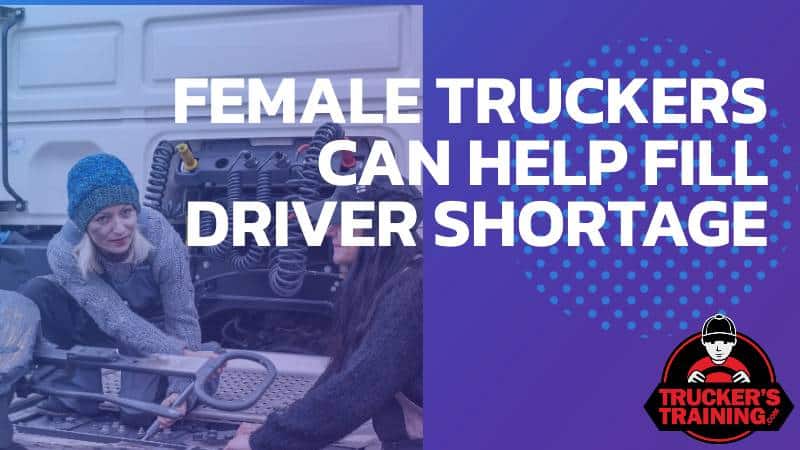
The shortage of truck drivers around the world is on a steep upward curve, especially in the USA. Trucking is a critical industry in the American economy with the majority of goods transported across the country by trucks and vans.
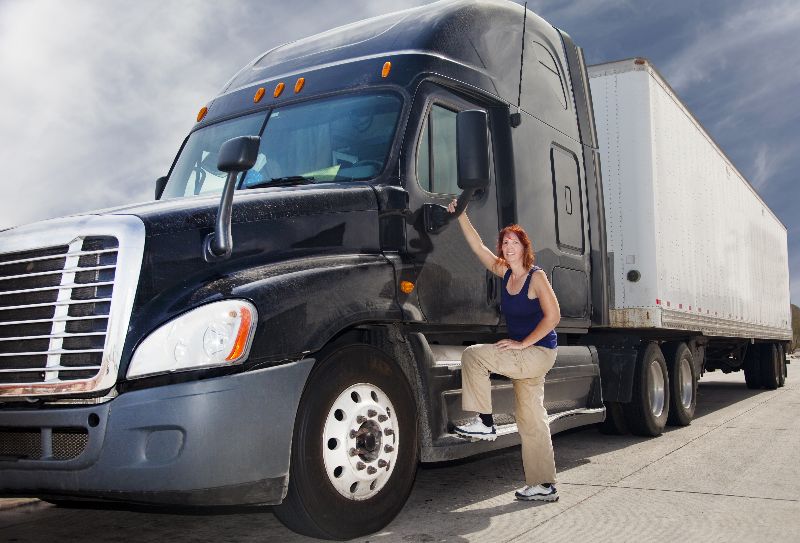
The recent and ongoing pandemic has increased the demand for home deliveries escalating the overall problem of trucker shortages. Some smaller haulage companies have gone under during this stressful time, creating more pressure to provide adequate goods deliveries throughout the USA.
The industry is constantly looking for ways to improve the situation with the recruitment of more women truck drivers of paramount importance.
Female Truck Driver Percentages
The trend has been a positive one in recent years but also a slow one. Currently, the official figures suggest that only around 7% of the trucking workforce is female, although individual trucking companies return a higher figure.
Although both sets of statistics remain low, there has been a more encouraging response in managerial positions with a year-by-year upward trend. Even so, the critical situation in the trucking industry is still focused on drivers. This focus is particularly on long-haul positions for which women have been somewhat reluctant to apply.
Ongoing improvements in conditions have been directed toward addressing this situation.
Pros and Cons for Female Truckers

Pros
Equal Salary
The most notably attractive feature of a trucking career for women is the equality of pay. Females are paid the same rates including claims/waiting times. The average salaries vary only in the type of trucking or van delivery jobs available. The figures range between around $52,500 per year to a high for long-haulage positions of over $86,500 p.a.
This is a good wage for women where there remain disproportionate salaries in other industries. Although changes are ongoing, at present high academic standards are not required to apply for trucking work.
Independence
For some women, the independence of life on the road appeals, and the pleasure of driving (salaried) throughout the country is an attractive proposition.
Cons
Family Obligations
The most needed area of trucking is in the long-haul sector. It is this area women are more reluctant to apply largely because of family considerations. Mothers, in particular, do not want to spend long periods away from their children.
Health and Safety Issues
The safety factor is another big concern for women, alone in the truck and at stopping places en-route. Uncomfortable in-truck conditions are another common complaint. Health concerns about diet and exercise are other factors and overall welfare conditions for all truckers, including females.
Changes in Truckers’ Working Conditions
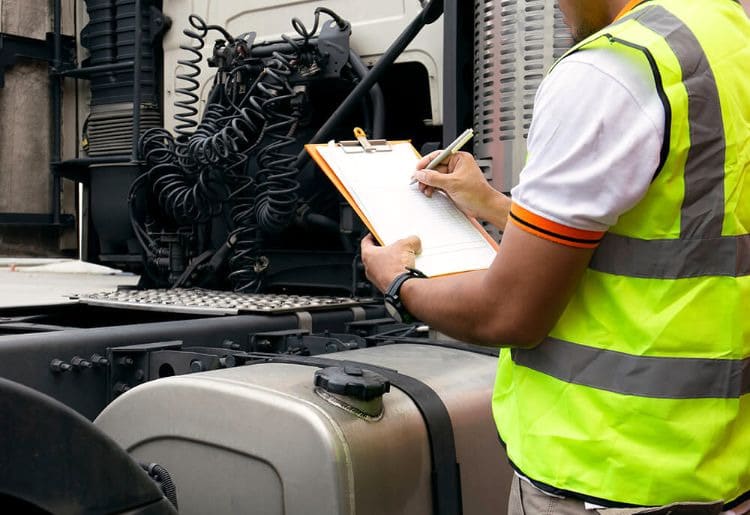
Pre-pandemic statistics show a deficit of 55,800 truckload drivers, a figure which is predicted to double in the next few years if this trend continues. With concern over this serious situation, much has been done recently to improve standards and conditions in the industry combined with a sustained recruitment campaign.
The Federal Motor Carrier Safety Administration (FMCSA) has been prominent in implementing new standards of training and certification to encourage prospective drivers to apply.
These policies have changed the way of life for many veteran drivers and resulted in some loss of staff. However, this has been balanced by a long-term strategy to make a career in trucking more attractive to new applicants.
New Rules, Regulations, and Positive Changes
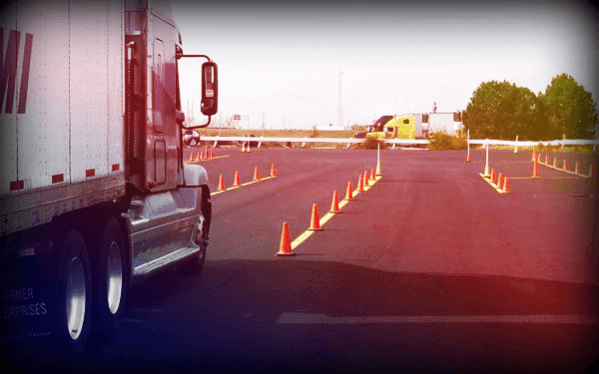
Improved training and safety conditions have run alongside an approach to more consideration for the welfare and wellbeing of current and potential truck drivers.
- Mergers of smaller companies with larger organizations allow for the re-employment of laid-off staff and opportunities for acquiring new training/certification.
- 2020 Entry-Level Driver Training (ELDT) rule involves higher standards of training to achieve the updated Commercial Driver’s Licence (CDL).
- Training schools have also updated training programs and instructors must meet new standards to improve safety in-truck and on-road conditions. Reducing crashes is of prime consideration for the FMCSA.
- Improvements in hours and pay including waiting times and family needs.
- Advanced technologies to back up new instruction techniques, comfort in the truck, and safety on the road.
Specific Improvements Affecting Women Drivers

- Structured hours to allow staff more time at home with the family or for social activities. Modern trends in shared male-female home responsibilities are favorably affected by changes to the time spent away from home for both sexes.
- Proposed improvements in truck design for women to be able to feel comfortable in seating and in controlling the vehicles.
- Recording, communication and alarm in-truck technologies for improved safety. Advanced GPS location systems assist in pinpointing the nearest breakdown, repair, and recovery points leaving drivers less vulnerable at such times.
- Food preparation, cooking, cooling, and preserving equipment enabling drivers to eat during stops without being obliged to enter trucker’s eateries or buy food en-route. This benefits women in particular, helping to avoid any safety/sexism issues at eateries or stores and potentially unhealthy and/or expensive meals. There are numerous choices today of portable cookers, warmers, refrigerators, and food containers suitable for camping or trucking that are helpful in long-haul assignments.
WIT Diversity & Inclusion (D&I) Index
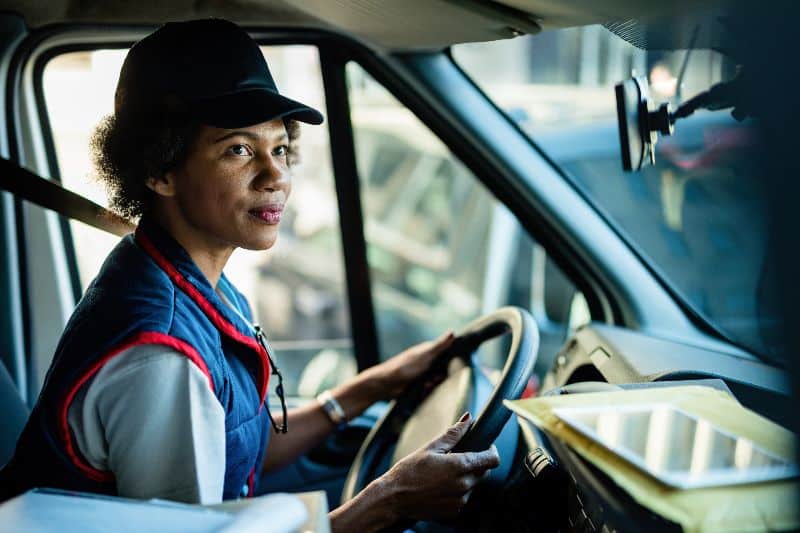
This index, produced by the Women in Trucking Association, in collaboration with other organizations, promotes a more inclusive workplace, and encourages the employment of women in the trucking industry. The WIT, a non-profit organization, aims to promote the skills of women in the industry.
They also strive to minimize problems and balance the ratio between male-female truckers. One of their main goals is to educate companies on the benefits of employing more female staff.
Advantages of More Women Drivers in Trucking Fleets

The WIT points out these benefits to trucking companies of encouraging more female applicants:
- The most obvious benefit is to fill the serious shortage of drivers, an increasingly urgent problem to resolve. Employing more female drivers is a critical strategy for the health of the economy.
- Wage levels have rocketed in some companies to persuade workers to stay on or to encourage new recruits. These increases are passed on to shippers. More women drivers can balance out the need for these exceptionally high wage levels and reduce costs in the trucking industry.
- Safety statistics indicate that women are less likely to be involved in crashes and subsequent claims.
- Women appear to be more careful drivers and less frequently break the regulations concerning speed limits and other safety rules, avoiding fines and criminal proceedings.
- The availability of fully operational fleets at peak demand times reduces the wastage of resources and lowers costs.
- More reliability at keeping long-term employment positions (i.e. not switching jobs).
Key Performance Indicators (KPIs)
Recent studies indicate that women generally drive at a steady pace, adhering to speed rules, and are reliable in delivering freight safely and on time. Reducing fuel costs and increasing efficiency facilitates a healthier trucking industry that can free up resources to improve standards and attract recruits.
Long-Haul Shortages
The most critical issue of driver shortages is related to this sector. Until recently this was traditionally a male-dominated area of trucking and continues to be so to a degree that is unhelpful to the industry.
The old notion of the life of a male trucker, out on the road, free-living, hard-drinking, may not have been entirely a myth. True or not, this image of trucking is out of keeping with the recruitment needs of the modern industry.
Changes in attitudes and practices have improved the reputation of truckers which has made it a more attractive profession for women, especially in the long-haul category.
More Plans to Encourage Women Recruits
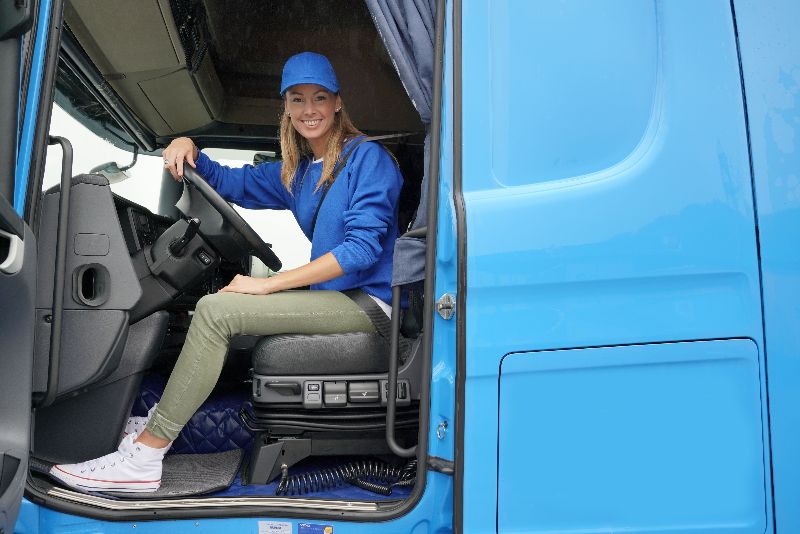
Although issues of safety and home life have seen a reluctance of women to apply for jobs in the industry, the numbers of employed females have risen slowly. Reports show that an increasing number of women recruits show a preference for long-haul driving positions.
The implementation of new personal safety strategies is planned to reduce limiting worries and encourage more women to apply for L-H positions. The WIT Association runs courses in self-defense and sexual harassment awareness training programs are being introduced in the industry.
Schemes to recruit married or relationship couples to work together for safety and companionship are also being mooted. In-truck video links to the family is another idea currently gaining favor.
Automatic Transmission
Trucking fleets have been converting from manual to automatic for some years and the prediction is that virtually all companies will switch in the future. Fuel costs and efficiency plus the ever-advancing refinements of computers appear to make this a wise and beneficial change.
For the drivers, especially females, automatic transmission is less demanding physically and may help encourage more female recruitment.
Takeaway
The notion of computerized systems taking over from human drivers is a dream for the future. At the present time, the trucking industry is in crisis with a desperate shortage of drivers to transport the country’s freight. The situation following the shock of the Covid-19 pandemic has yet to settle and clarify.
There is little doubt though that the efficient operation of the trucking industry will play an essential role in the recovery of the nation’s economy. Increasing the number of female truck drivers to fill the shortage is a positive step to achieving and maintaining that efficiency.

Geoff is a freelance writer at TruckersTraining.com with 20+ years of experience driving trucks and buses, dispatching, supervising, and training commercial driving teams. His expertise is writing topics on the transportation and trucking industry, and information technology trends.
